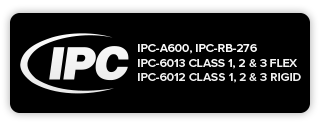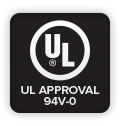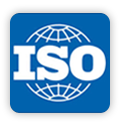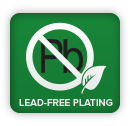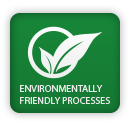


Glossary
A B C D E F G H I K L M N O P R S T U V W Z
A -
AOI / Automated Optical Inspection
The abbreviation for Automated Optical Inspection, process of inspecting PCB's and FCB's using optical equipment.
AWG / America Wire Gauge
Standard of measurement in the United States for measuring and labeling wire diameter.
Amp / Ampere
The measurement of electrical current per second in a circuit.
Activating
The process of converting unconductive material to attract electrical deposits.
Active Components
Semiconductors (transistors and diodes) used in a circuit to change its operation.
Annular Ring
Exposed conductive material around the ring of a thru hole, a measured width of the pad surrounding a thru hole.
Aperture
The shape and size of a tool used to make a pad or track on a circuit board. Each aperture corresponded to a different D code in the Gerber data.
Aperture Information
Text file showing the size and shape of each element on a board, used when making a layer of a circuit board. Normally, included when saved as a RS274XGerber with embedded Apertures.
Array
Circuits, circuit boards arranged in rows on a base material.
Artwork
A PCB design configured to produce a "artwork master."
Artwork Master
A film or glass plate that encompasses a PCB image, normally a 1:1 scale.
Aspect Ratio
Is the ratio of the circuit board thickness, to the smallest hole diameter of a printed circuit board.
Assembly
The process of combining multiple parts to produce a final product.
Assembly File
Any file or drawing denoting the locations of components on a PCB or FCB.
B -
B Stage Material
Also known as prepreg, is material that is resin cured to B stage.
BBT
Abbreviation for "Bare Board Test."
BGA / Ball Grid Array
When solder ball interconnects cover the bottom surface of a package.
BOM / Bill Of Materials
A quantity list of all required components and raw materials that are used during production to make a product.
Bare Board
A manufactured printed circuit board that doesn't have any components mounted to it.
Barrel
A cylindrical hole formed by plating through a drilled thru hole.
Base Copper
The thin copper foil portion of a copper-clad laminate for PCBs. It can be present on one or both sides of the board.
Base Copper Weight
The amount of copper on a board measured by weight or thickness. This amount determines the weight.
Base Laminate
A rigid or flexible, substrate that the conductive pattern is formed on.
Base Material
A rigid or flexible, substrate that the conductive pattern is formed on.
Base Material Thickness
Base material thickness not including metal foil or other material deposited on the surface.
Bed Of Nails Fixture
A test fixture used to make electrical contact with a PCB for testing.
Bleeding
The discharge of materials or solutions in a plated hole from voids or crevices.
Blind Via
A conductive surface hole that interconnects an outer layer with an inner layer of a multi layer board without penetrating the entire board.
Blister
Any delamination or swelling between any of the layers, or between base the material and conductive foil.
Board Thickness
The required thickness of the board material.
Bond Strength
Force needed to separate two adjacent layers of a board.
Burr
Material that protrudes on the outside of a copper surface after drilling.
Buried via
hole that connects two or more inner layers but does not penetrate the outer layers, and cannot be seen or accessed from either side of the board.
C -
CAD
The abbreviation for a Computer Aided Design.
CAM
The abbreviation for Computer Aided Manufacturing.
CAM Files
Gerber, NC Drill and Assembly Drawings, sorted into files used in the manufacturing of PCB's.
CBGA / Ceramic Ball Grid Array
A ball grid array, packaged with a ceramic substrate.
CEM1 / CEM3
CEM1 and CEM3 are standard epoxy resin with woven glass reinforcement over a paper core used in making PCB's. The difference in the two is in the paper used. Most often the cost is less.
C Stage
The condition of a resin polymer when it is in a solid state with high molecular weight.
COB / Chip-on-Board
Where a chip is attached to a printed circuit board with solder or conductive adhesives.
Cte
The measure in the amount a material changes per degree of temperature change.
Cantilevered leads
Conductors that extend from an edge of a flex circuit that are not supported.
Capacitor
A component capable of storing electrical energy that is used when the potential energy difference may occur in a circuit.
Chamfer
Purposely removed corner to eliminate a sharp edge.
Circuitry Layer
The side of the circuit board where the majority of the components are located, sometimes including ground and voltage planes. Also called component side.
Clad or Cladding
A relatively thin layer or sheet of metal foil that is bonded to a laminate core to form the base material for printed circuits.
Coating
A thin material added to the surface of a circuit board. This material can be conductive, magnetic or dielectric.
Component
An electronic component attached to a pcb by soldering, used to create an electric circuit.
Component Hole
The hole used in attaching a electrical component, sometimes including a pin or wire to the circuit board.
Component Side
The side of the circuit board where the majority of the components are located.
Conductor
Conductive materials used in carrying electrical current on a pcb surface or in an internal layer, also known as traces.
Conductor Spacing
The edge to edge distance between conductive traces.
Conductor Thickness
The edge to edge thickness of a conductor.
Conformal Coating
A protective coating applied on the completed board assembly.
Connector Area
Area on a circuit board that is used for making electrical connections.
Connector
Any fastener that connects wires in a cable to other wires or equipment.
Consignment
When the customers provides all the parts and materials to builds the products ordered. Manufactured and delivered as complete assemblies. Can also be called "kitted."
Contact Angle
Also known as the "Wetting Angle." The angle between surfaces of two objects when bonding.
Continuity
The essence of having a continuous flow of current.
Copper Foil
The amount of copper on a board measured by weight or thickness.
Corrosive Flux
Flux containing chemicals such as halides, amines, inorganic or organic acids that are corrosive and can cause oxidation of conductors.
Coverlayer
Insulating layer usually bonded with adhesive.
Curing
Time needed for any epoxy to harden at a certain temperature/time setting.
Cut lines
A cut line is the outer dimensions of your board.
D -
DFSM / Dry Film Solder Mask
Abbreviation for Dry Film Solder Mask. The lamination process using a coating material to protect the board from solder or plating.
DRC
Abbreviation for " Design rule check."
Date / Lot Code
When text or dates in your design are etched in copper on the board surface.
Deburring
Process of removing burrs after drilling.
Delamination
Any swelling between any of the layers, or between base the material and conductive foil.
Design Rule
Specified design parameters set by an automatic conductor routing guidelines.
Design Rule Checking
Design rules that are checked with the use of a program to verify the conductor routing.
Desmear
Friction melted resin and drilling debris that is removed from a hole wall.
Dewetting
When hot solder has seeped in the surface leaving mounds separated by areas covered with a thin solder film.
Die
An integrated circuit chip that has been cut from a finished wafer.
Die Bonding
The process of attaching an IC chip to a substrate.
Dielectric
An insulating medium which occupies the region between two conductors.
Digitizing
Feature locations converted to flat plane, digital representation in X-Y coordinates.
Dimensional Stability
The measurement of dimensional change in a material caused by temperature changes, humidity changes, chemical treatment, or stress.
Diode
An electronic component that restricts current flow to one direction.
Double Sided Board
Conductive patterns on both sides of a printed circuit.
Drill Tool Description / Drill File
A text file showing the drill tool number and corresponding size for the production of a circuit board. X-Y coordinates are required.
Dry Film Resists
Coating materials suitable for all photomechanical operations and are resistant to various electroplating and etching processes.
E -
ESD / ElectroStatic Discharge
Electrostatic Discharge. ESD can be reduced using grounding straps, anti-static mats, boxes, bags and packing materials.
ESR / Electro Solder Resist
Electro-statically applied Solder Resist.
Edge Clearance
The smallest distance from any components or conductors to the edge of the circuit board.
Edge Connector
Gold plated pads or lines of coated holes on the edge of a circuit-board used to connect other circuit boards or electronic devices.
Electroless Copper
A thin layer of copper added to plastic or metallic surface on a PCB with out the use of an electrical current, applied with an autocatalytic plating solution.
Electroless Deposition
The chemical coating of a conductive material onto a base material surface by reduction of metal ions in a chemical solution without using electrodes compared to electroplating.
Electroplating
The electrical deposit of a metal coating on a conductive object. A D.C. voltage source is connected to one terminal to be plated and is placed in an electrolyte while the metal to be deposited is immersed and connected to the opposite terminal.
Epoxy
Thermosetting resins used in the packaging of semiconductor devices.
Epoxy Smear
Undesirable Epoxy resin located on the edges of copper in holes during drilling. either as uniform coating or in scattered patches. This can electrically isolate the conductive layers from the plated thru hole interconnections.
Etchback
Removal of all components from the base material using a chemical process acting on the sidewalls of plated through holes to expose internal conductor areas.
Etching
Chemical or chemical/electrolytic used in the removal of unwanted portions of conductive materials.
F -
FR-4
Flame Retardent laminate made from woven glass fiber material impregnated with epoxy resin.
Farad
A unit of measure of the amount of electric charge or capacitance stored.
Finished Copper
This finished weight of the base and electroplated copper per square foot of material.
Fine Pitch
Fine pitch commonly referred to surface mount components with a lead pitch of 25 mils or less.
Finger
A finger like gold plated terminal of a card edge connector used in termination.
Flux
A chemical compound used to remove surface oxides and impurities and to improve wetability when soldering.
Functional Test
The simulated electrical test of an assembled circuit with completed by the test hardware and software.
G -
GI
Woven glass fiber laminate impregnated with polyimide resin.
Gerber File
File used to control a photoplotter in the production of pcb's. The preferred Gerber format is RS274X, which embeds the apertures within the specific files. The apertures assign specific values to design data (specific pad size, trace width, etc.), and these values make up a D-code list.
Ground Plane
A common ground reference in a multilayer PCB for current returns of the circuit elements and shielding and heat sinking.
Gold Finger
A finger like gold plated terminal of a card edge connector used in termination.
H -
HASL / Hot Air Solder Leveling
Hot air solder leveling
Hdi / High Density Interconnect
Ultra fine geometry multi layer PCB constructed with conductive surface Microvia connections between layers. These boards also usually include buried and/or blind vias are made by sequential lamination.
Hermetic
The airtight sealing of an object.
Hole Breakout
A condition in which a hole is partially surrounded by the land.
Hole Density
The number of holes on a PCB.
Hole Pattern
The arrangement of all holes in a printed board with respect to a reference point.
I -
IPC
Worldwide organization that sets standards, specifications and guidelines for PCB design, manufacturing and assembly.
ISO / International Standards Organization
Abbreviation of the International Standards Organization.
IST / Interconnect Stress Test
Interconnect Stress Test is designed to quantify the ability of the total interconnect to withstand the thermal and mechanical strains, during its normal state of use, until the products reaches the point of failure.
Inner Circuit Test
The testing of an individual component or part of the circuit in an assembly instead of testing the whole circuit.
Insulation Resistance
The electrical resistance of an insulating material that is determined under specific conditions between any pair of contacts, conductors, or grounding devices in various combinations.
Insulator
A material such as ceramic, rubber, or plastic that blocks the flow of electric current.
Integrated Circuit
A microscopic combined array of electronic circuits and components that has been implanted onto the surface of a single crystal, or chip, of semiconducting material such as silicon.
Internal Layer
A conductive pattern which is contained entirely within a multilayer circuit board.
Interstitial Via Hole
An embedded thru hole with connection of two or more conductor layers in a multilayer PCB.
K -
Kgb / Known Good Board
Known good board or assembly.
L -
LPI / Liquid Photo Imageable
Liquid Photo Imageable solder mask that uses photographic imaging to control a thinner mask deposit than the dry film solder mask.
LCP / Liquid Crystalline Polymer
Liquid Crystalline Polymer, a relatively new dielectric substrate used in the manufacture of flex circuits.
Land
The portion of the conductive pattern on printed circuits designated for the mounting or attachment of components.
Laminate
A composite material made by bonding together several layers of same or different materials. Glass or paper reinforced plastic material that supports the copper cladding where circuit traces are created.
Lamination
The process manufacturing a laminate using pressure and heat.
Laminate Thickness
Thickness of the metal-clad base material, single or double sided, prior to any subsequent processing.
Laminate Void
An absence of epoxy resin in any cross-sectional.
Layer Sequence
The order in which the layers are stacked as seen through the top of the board.
Lead Time
The amount of time it requires to manufacture a specific project.
Leakage Current
Current that flows across a dielectric area between two adjacent conductors.
Legend
The lettering of symbols, part numbers, serial numbers, component locations and patterns.on the printed circuit board.
Line
A thin conductive area on a PCB surface or internal layer usually composed of lands and traces.
M -
Mask
A soluble compound that is used to prevent solder from filling in areas that need to be solder free.
MIL-SPEC
United States Defense Standard, often called a military standard, " MIL-STD ", or " MIL-SPEC ". A MIL-SPEC for quality standards for electronic parts is MIL-STD-202.
Measling
Discrete white spots or crosses below the surface of the base laminate that reflect a separation of fibers in the glass cloth at the weave intersection.
Microsectioning
The preparation of material, or materials, that is to be used in metallographic examination. This usually consists of cutting out a cross-section followed by encapsulation, polishing, etching, and staining.
Microvia
Usually defined as a conductive hole with a diameter of 0.006 in or less that connects layers of a multilayer PCB.
Minimum Conductor Space
The smallest distance between any two adjacent conductors or traces on a PCB.
Minimum Conductor Width
The smallest width of any conductors or traces on a circuit board.
Multimeter
An instrument of measure used to read resistance, current and voltage.
Multilayer Printed Boards
Circuit boards consisting three or more layers of printed circuits on separate conducting circuit planes separated by insulating materials and bonded together into relatively thin homogeneous constructions with internal and external connections to each level of the circuitry as needed.
N -
NPTH
Non-plated Through Hole.
NC Drill
Numeric Control drill machine used to drill holes at exact locations of a PCB specified in NC Drill File.
Netlist
A list of parts and their connection points on each circuit.
Node
A pin or lead to which at least two components are connected through conductors.
O -
OEM / Original Equipment Manufacturer
An abbreviation of original equipment manufacturer, An OEM is a company that builds products or components which are used in products sold by another company.
Ohm
A unit of electrical resistance.
OSP / Organic Solder Preservative
Abbreviation for organic Solder Preservative.
P -
PCB / Printed Circuit Board
Printed Circuit Board.
PEC / Printed Electronic Component
Printed Electronic Component.
PTH / Plated Thru Hole
Plated through hole. Used as a means of creating an electrical connection from one circuit layer to another.
Pad
The portion of a conductive pattern for connection and attachment of electronic components on the PCB. Also called Land.
Panel
A rectangular sheet of base material or metal-clad material of predetermined size that is used for the processing of printed boards.
Panels
An array of, usually identical, separate circuits manufactured on the same piece of material.
Pattern
The configuration of conductive and nonconductive materials on a panel or printed board.
Pattern Plating
The selective plating of a conductive pattern.
Photographic Image
An image in a photo mask or in an emulsion that is on a film or plate.
Photo Print
The process of forming a circuit pattern image by hardening a photosensitive polymeric material by passing light through a photographic film.
Photoplotting
A photographic process whereby an image is generated by a controlled light beam that directly exposes a light sensitive material.
Pick & Place
The assembly process where components are selected and placed onto specific locations according to the assembly file of the circuit.
Pitch
The center to center spacing between conductors.
Plating Resist
Material deposited as a covering film on an area to prevent plating on this area.
Plating Void
The area of absence of a specific metal from a specific cross sectional area.
Plotting
The mechanical converting of x-y positional information into a visual pattern such as artwork.
Polarity
Two oppositely charged poles, one positive one negative.
Potentiometer
A variable resistor often used to control a circuit.
Prepreg
Sheet glass fabric material impregnated with a resin cured to an intermediate stage.
Printed Board
The general term for completely processed printed circuit or printed wiring configurations. It includes single, double sided, and multilayer boards, both rigid and flexible.
Printed Circuit
A conductive pattern that comprises printed components, printed wiring, or a combination.
Printed Circuit Board
A self-contained module of interconnected electronic components. The circuits are formed by a thin layer of conducting material deposited, or "printed," on the surface of an insulating board.
Printed Wiring Board
A part manufactured from rigid base material upon which completely processed printed wiring has been formed.
Prototype
A physical model of a new product concept.
R -
RF / Radio Frequency
A circuit design that operates in a range of electromagnetic frequencies above the audio range and below visible light. All broadcast transmission, from AM radio to satellites, falls into this range, which is between 30KHz and 300GHz.
RoHS
A European Union that stands for "Restriction Of Hazardous Substances." This bans the use of materials in new electrical and electronic equipment containing more than agreed levels of lead, cadmium, mercury, hexavalent chromium, polybrominated biphenyl (PBB) and polybrominated diphenyl ether (PBDE) flame retardants in the European market. Effective July 1, 2006.
Reflowing
The melting of an electrodeposited tin/lead followed by solidification. The surface has the appearance and physical characteristics of being hot-dipped.
Reflow Oven
A reflow oven is a high precision oven used for soldering electronic components to printed circuit boards using surface mount techniques.
Reflow Soldering
Melting, joining and solidification of two coated metal layers by application of heat to the surface and predeposited solder paste.
Resistor
An electronic component that opposes the flow of electrical current.
Resist
Coating material used to mask or to protect selected areas of a pattern from the action of an etchant, solder, or plating.
Route
The layout and or wiring of an electrical connection.
Registration
The degree of conformity to the position of a pattern, or a portion thereof, a hole, or other feature to its intended position on a product.
Resin Epoxy Smear
Resin transferred from the base material onto the surface of the conductive pattern in the wall of a drilled hole.
Resist
Coating material used to mask or to protect selected areas of a pattern from the action of an etchant, solder or plating.
Rigid-Flex
A PCB construction combining flexible circuits and rigid multi layers usually to provide a built-in connection or to make a three dimensional form that includes components.
S -
SMOBC / Soldermask Over Bare Copper
The abbreviation for "Soldermask Over Bare Copper."
SMD / Surface Mount Device
Surface Mount Device.
SMT /Surface Mount Technology
The abbreviation for Surface Mount Technology. A method for constructing electronic circuits in which the components are mounted directly onto the surface of printed circuit boards.
Screen Printing
A process for transferring an image to a surface by forcing suitable media through a stencil screen with a squeegee.
Silk Screen
White marking ink to identify components during later assembly and troubleshooting processes. Can be placed on one or two sides, depending on the board design and application.
Single Sided PCB
The pads and traces are on the one side of the board only.
Solder
A metal alloy with a low melting point used to join components to boards.
Solder Bridging
Two or more adjacent pads that come into contact to form a conductive path.
Solder Bumps
Round solder balls bonded to the pads of components used in face-down bonding techniques.
Soldering Iron
Tool with an internal heating element used to heat surfaces being soldered to the point where the solder becomes molten.
Solder Mask
A term for solder resist. It protects the board and circuitry during the assembly and packaging. Solder mask also prevents solder bridges between adjacent pads and traces during the wave soldering process.
Solder Wick
De-soldering wire used to remove molten solder away from a solder joining or a solder bridge.
Steel Rule Die
A tool used to cut flex circuits (and other materials) from a panel.
Stiffener
A rigid or semi-rigid material that is bonded to a flex circuit to facilitate the component attached. Usually made of polyimide or epoxy glass.
Substrate
A material on whose surface adhesive substance is spread for bonding or coating. Also, any material which provides a supporting surface for other materials used to support printed circuit patterns.
Surface Mount
The pitch of the surface mount is defined as the dimension in inches from center to center of surface mount pads. Standard pitch is >0.025", fine pitch is 0.011"-0.025", and ultra fine pitch is <0.011".
T -
THT / Thru Hole Technology
Abbreviation for Through-hole Technology. The method for constructing circuits where the components are inserted into holes drilled in printed boards and soldered to pads on the opposite side.
Tinning
The process of coating wires or contacts with a light layer of solder before the final soldering.
Transistor
An electronic device used to control the flow of electricity.
Trim Pot
A potentiometer used to control the resistance in a circuit.
Turnkey
A process where the manufacturer procures all the parts and materials and deliver complete assemblies or cables to the customer.
TC / Temperature Coefficient
The ratio of change of an electrical parameter, such as resistance or capacitance, of an electronic component to the original value when temperature changes, expressed in %/¼C or ppm/¼C.
Tab Routing
When the manufacturer will not cut the boards out completely but will either a tab route or score the area in between the boards so they just snap apart.
Testing
The method of determining a finished product will conform to the set of parameters and specifications. Tests include, in-circuit, functional, system-level, reliability and environmental.
Test Coupon
A portion of a printed circuit board or panel that contains printed coupons used to check its acceptability.
Test Point
A specific point in a circuit board used for testing adjustment or quality in the circuit.
Thief
An extra cathode placed to divert itself some of the current from other portions of the circuit that would otherwise receive to much current density.
Tooling Holes
The term for holes placed on a PCB or a panel of PCB's used to hold them down during the manufacturing process.
Turnkey
When all aspects of manufacturing including material acquisition, assembly and testing are outsourcing to a subcontractor.
Twist
A laminate defect in which deviation from planarity results in a twisted arc.
U -
UL / Underwriters Laboratories
A non profit product safety and testing and certification body. UL permits applying a number on products that comply with their standards.
Unshielded
A circuit or cable that is not protected from electromagnetic or radio-frequency interference by a metal sheathing.
Uv Curing
The use of ultra violet light to polymerize or harden resinous material in a wet coating.
V -
Via
A plated thru hole used for the interconnection of conductors on different sides or layers of a printed circuit board between traces and doesn't have component lead or other reinforcing material inserted in it.
Void
The absence of any substances in the manufacturing process in a localized area.
W -
Water Wash
A machine that uses jets of water to wash flux and water soluble mask off printed circuit boards after they have been through a wave solder machine.
Watt
The standard unit of measurement of electrical power.
Wave Solder Machine
During the assembly process printed boards are brought in contact with a continuously flowing and circulating mass of solder. This process uses a tank to hold molten solder and the components are placed in/on the board and the loaded board is passed across a wave of solder.
Wicking
Migration of copper salts into the glass fibers of the insulating material.
Windowed leads
Conductors that are unsupported by insulation. Typically running across a window, the pitch can be quite tight allowing high density mass termination.
Z -
ZIF / Zero Insertion Force
A type of termination that allows a flex circuit tab to be inserted into a circuit board mounted connector and locked into place.
Contact Us

